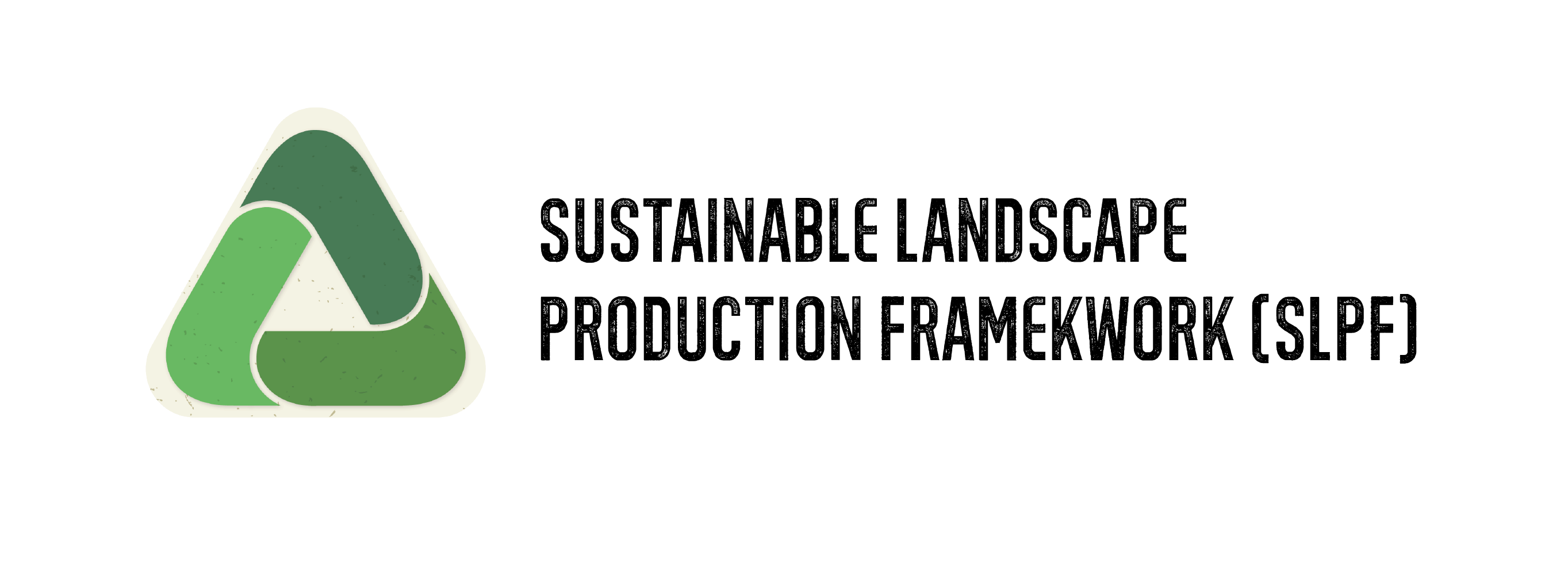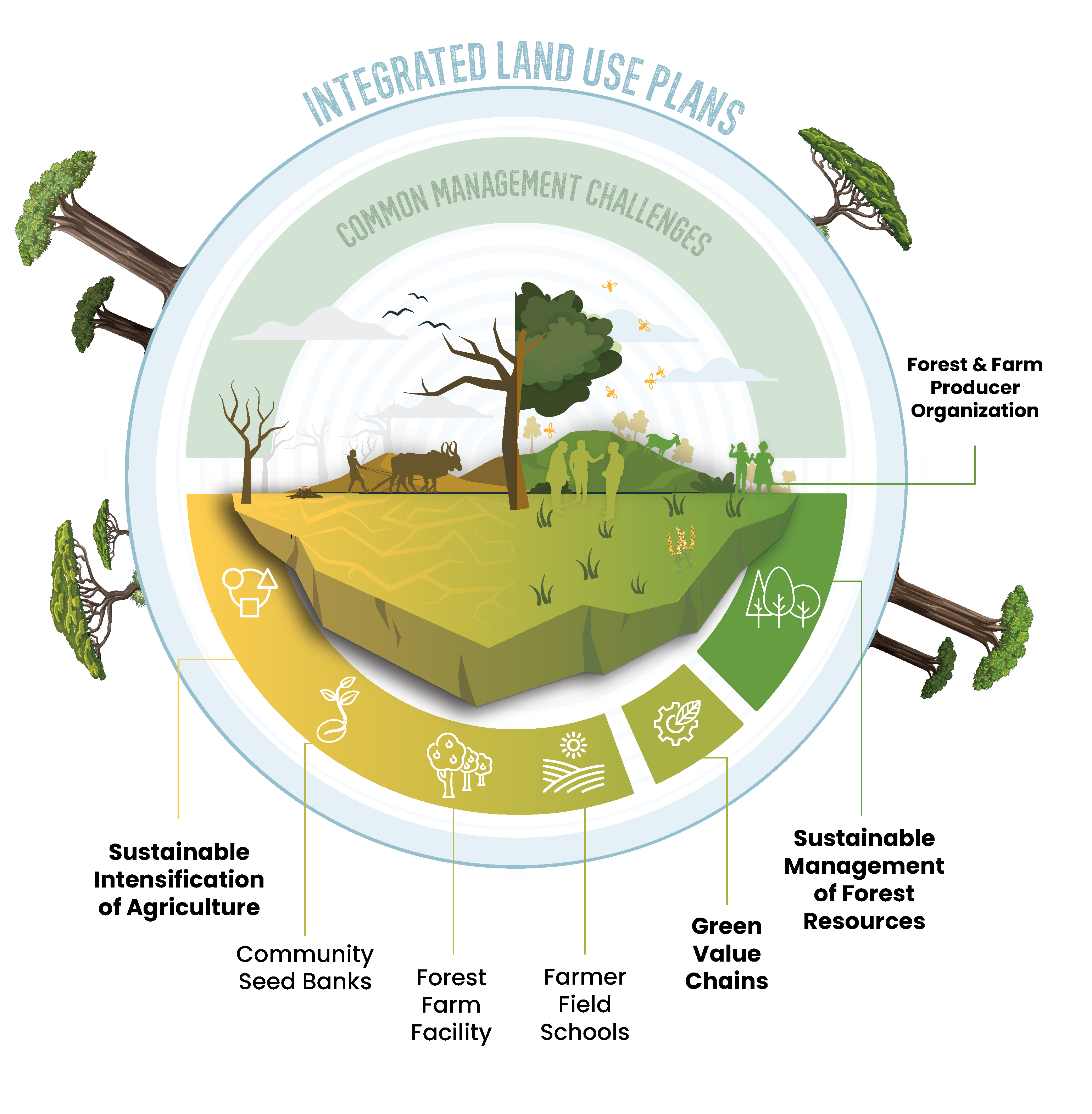
The FAO-led Drylands Sustainable Landscape Impact Program (DSL-IP) supports countries in achieving Land Degradation Neutrality (LDN) in dryland ecosystems across 11 countries in Africa and Central Asia. To move away from working through piecemeal and siloed approaches, the Global Coordination of the DSL-IP proposes a framework to support the design of integrated and scalable land management options for rural development.
The Sustainable Landscapes Production Framework (SLPF) has been designed to strengthen and integrate key elements of the DSL-IP strategy to counter-balance land degradation while improving livelihoods.
The framework integrates three FAO flagship programs in a tailored manner to tackle common land management challenges in dryland landscapes.
Conceptual Framework
The Drylands Sustainable Landscapes Impact Programme aims to address drivers of land degradation in an integrated manner, by promoting sustainable management of the selected productive landscapes through integrated landscape management plans. Sustainable land management, green value chains, and crop diversification are essential components of a holistic approach to enhancing the livelihood of farmers and land users. By integrating these three elements, farmers can increase both their yields and their income, while also contributing to the restoration and conservation of natural resources.
Sustainable land management practices such as soil and water conservation, crop diversification, trees on farm can improve the productivity and resilience of agricultural systems, while also reducing the environmental impact of farming, hereby counteracting land degradation. These practices can be complemented by the development of green value chains, which are anchored on farming systems that have a positive impact on land productivity and minimize negative externalities from production process. In addition, by participating in these value chains, farmers can receive higher prices (certification, branding, green Premium) for their products and generate additional income.

The Sustainable Landscape Production Framework (SLPF) aims to combine sustainable land management, green value chains, and crop diversification as a model that can increase productivity, improved livelihoods, strengthen resilience of farmers, land users and communities. To reach the goal of LDN and sustainable livelihoods, the DSL-IP leverages on three strategic knowledge hubs :
- Farmer Field Schools Program
- Forest and Farm Facility
- International Treaty on Plant Genetic Resources
Farmer-to-Famer Learning
Learn More:
Farmers, in developing countries or not, need access to rural advisory services (RAS). It enhances access to information and empowers farmers and communities with knowledge, strengthen their capacity and promote innovation. This need is particularly acute for integrated systems, which are knowledge-intensive and often require specialized skills. Helping farmers access the information and services they need are therefore key priorities in programs aimed at improving rural livelihoods. Farmer Field Schools (FFS) offer a multifaceted approach to teaching sustainable land management practices, empowering farmers, and fostering bottom-up knowledge structures. By engaging farmers directly on their own fields, this approach enables participants to grasp sustainable practices and their implications through practical experience. It promotes peer-to-peer learning and knowledge sharing among farmers, creating a community of practice where local expertise is valued and respected. This bottom-up approach to knowledge sharing and creation ensures that solutions are context-specific, adapted to local conditions, and based on the experience of those who work the land in question. In addition, the capacity development curricula (ICDIP) will be tailored to the needs of identified groups.
The Sustainable Landscape Production Framework (SLPF) leverages and builds upon decades of FAO's experience on FFS, ensuring lessons learned from previous programs are used to inform evidence-based decision making.
When discussing nature-based solutions and the achievement of land degradation neutrality, seeds and seedlings play an important role in providing the genetic pool of options for land management interventions. If the goal is to maintain and improve the integrity of the Miombo-Mopane ecosystem, while improving the livelihoods of the people living within it, these genetic pools are a key piece of the solution.
Within seed groups resides a profound connection to the region’s agricultural heritage, encompassing the cultivation of crops that are inherently suited to the local environment. These communities also harbour insights into the dietary preferences of the land users living in the area. Therefore, land users should be empowered with multifaceted skills, including the use and production of productive, drought-resistant, and ecologically significant plant species and varieties - trees, crops, shrubs, grasses, or however one prefers to cluster plants.
Community seed banks are hence an important tool for enhancing the livelihood of farmers and reducing their dependency on external inputs. By maintaining a diverse collection of locally adapted crop varieties, community seed banks help farmers to maintain and enhance genetic diversity, which is critical for resilience and adaptation to changing environmental conditions.
Through the application of the SLPF, the valuable existing expertise of these landscape groups are enhanced and tailored to achieve specific objectives. In this example, improve livelihoods while maintaining the integrity of the Miombo-Mopane ecoregion.
Crop Diversitifation and Resilience
Learn More:
Cultivating Sustainable Value Chains
Learn More:
Green Value Chains seek to minimize the adverse impacts of traditional linear supply chains, which often exploit natural resources, degrade ecosystems, and contribute to land degradation. In the DSL-IP, besides the access to market and business plan development, the SLPF seeks to ensure the environmental integrity of the landscape is maintained, or improved in the process.
In the DSL-IP Miombo-Mopane region, the Global Coordination and its country teams in Angola, Botswana, Malawi, Namibia, Tanzania and Zimbabwe are leveraging on existing Forest and Farm Producer Organizations (FFPOs) in the DSL-IP landscapes to amplify their impact. The DSL-IP will work with these groups to ensure that value chain development in project landscapes are regenerative, contributing to increase natural capital, achieve project objectives and deliver global environmental benefits goals.
The integration of Farmer Field Schools, Community Seed Banks and Forest and Farm Facilities within the SLPF leads to strong agriculture-forestry linkages, achieving LDN while fostering empowerment and sustainable development at grassroots level.
